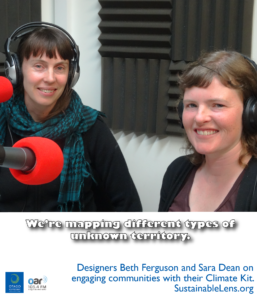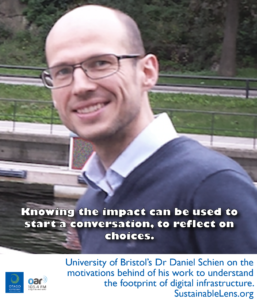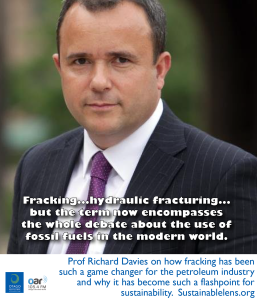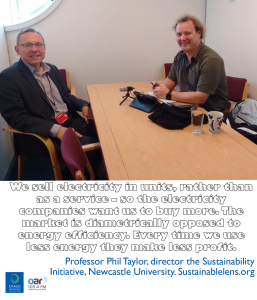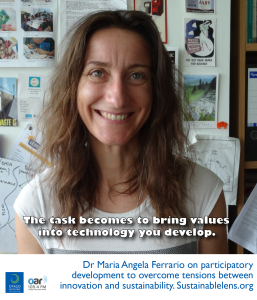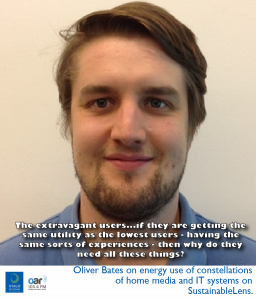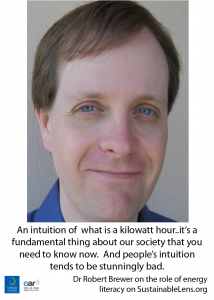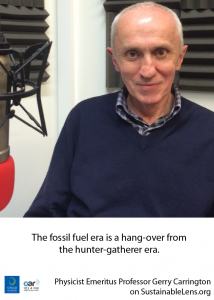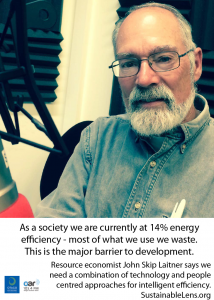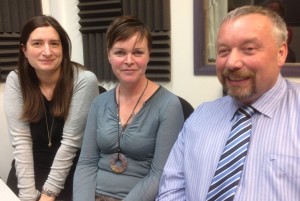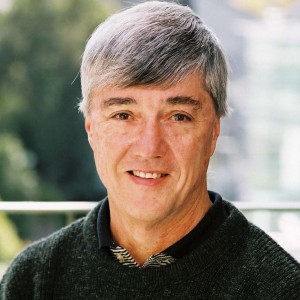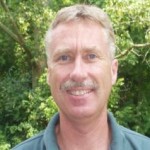| Shane: |
First of all I want to talk about you guys. Beth can I start off with you? You got into solar energy. You’re an engineer. When did you decide to become an engineer and what got you interested in solar energy?
|
| Beth: |
Yeah. It’s actually a personal transportation story. I was a graduate design student at the University of Texas in Austin and really interested in small electric vehicles and just by chance saw a small electric scooter on Craigslist. It’s like a used item website in the states. For $200 I bought an electric bike and it was an awesome way to move around the city without having to deal with expensive parking or gas. I’ve quickly found challenges bringing it to my college campus. I had no place to charge it or plug it in. I’d bring it in to my study and be bothered thinking everyone thought it was a gas motorcycle. I realized, being in Texas, that there’s not infrastructure for small electric vehicles yet, but of course other more progressive states probably have that infrastructure.
|
|
This was in 2007. I had trouble finding other alternatives and worked with a small solar company and found out one solar panel could charge my electric scooter. Then I started getting into design and prototyping and thinking a solar charging station would actually be quite feasible for electric bikes and scooters and even electric cars. In 2007, electric vehicles were just catching on and the prices of solar panels, so my timing with this challenge was really good. Seeing both the solar industry get stronger as well as more electric bikes and scooters and cars available. The last seven years I’ve seen these industries really grow and I started my own studio call Solar Design Lab, where I work with other engineers, architects, designers and do public projects that are commissioned by universities, city utilities, music festivals for phone charging. We’ve brought the project to many different places.
|
|
We’re on, I think, prototype 12 right now for the city of Austin, they’re utility for a new street called electric drive. Electric drive will have demonstration areas for electric car charging, bikes and scooters as well as USB ports for outdoor phones. That’s like a quick version of many years of working in public places and bringing solar energy down to the street. The projects are the size of bus stops. They’re pretty easy for people to interact with and see how they work.
|
| Sam: |
That’s incredible. Go back to your childhood. Where did you grow up?
|
| Beth: |
I grew up on the coast of Maine, which is a good question because it’s not unlike Dunedin and I felt quite at home here in the hills and on the coast.
|
| Sam: |
All right. As a young girl, did you imagine yourself being an engineer from a very young age or is that something you … How did you get into engineering? What’s your journey there?
|
| Beth: |
I was always really interested in the environment. Living on the coast, being able to ride my bike and hike and find the environment as a big inspiration. My master’s degree is in design, but after I received that degree, I did take solar engineering courses at a local community college to get solar engineering skills. That’s kind of been my toolkit so that I’ve been able to put a lot of curriculum together. I’ve always loved teaching from a young age, working in environmental summer camps and getting to explore the outdoors. Maine is on the East Coast of the United States, very close to Canada. It’s a place that people really appreciate the environment. Coming up with alternatives that are going to be using less dependence on fossil fuels has been an interest of mine for a long time. My interest in sustainability kind of has merged with transportation solutions, transportation and electricity are huge numbers to the green house gases in the US. Coming up with solutions for the way we move through our city and the way we use electricity is very important for how we’re going to really reduce our carbon in the US.
|
| Sam: |
Was that your driving passion, that pushed you through college and guided your career?
|
| Beth: |
In undergraduate work, I studied ecological design. My interest art and all different types of art, public art and performance art really combined with my interest in the environment to be environmental design. I think I saw a documentary on Buckminster Fuller as a young student and that really inspired me to see the types of design that’s possible for re-envisioning the world that we want versus accepting these unsustainable models we have for the way cities are laid out. We have suburbs. I’ve always like a city you can bike and walk in. I’ve lived in New York City. I love community gardens. I love having a healthy lifestyle and I think that that is possible if we re-shift the way urban planners have made big sprawl in cities and really condense cities again to be livable and affordable with public transportation as well as small electric vehicles.
|
| Shane: |
I think one of the focuses of the interview, we’re going to talk about this interest between arts and science and design and the environment. We’ll circle back to that eventually, but I want to turn to Sara and ask you the same questions. Where did you grow up and what’s your background? What got you into your career?
|
| Sara: |
One of the commonalities that Beth and I have is a varied number of disciplines that we’ve kind of accumulated into a space where we want to work. I grew up in Virginia, which is in the Southeast of the United States. I originally studied communication arts, interested in how we communicate through graphic design and illustration. After that I moved to New Orleans, and worked a lot in building and renovating houses alongside the work I was doing as a graphic designer, which was geared toward community organization.
|
|
I worked as the lead graphic designer for ACORN, the Association of Community Organizations for Reform Now for a number of years in New Orleans and that work really brought home to me how design can activate communities, can be tools to make policy and the distinctions, or the opportunity for on the ground community work design and government policy to be in a conversation together. A question I’ve always had is what is the device that makes a problem or a challenge visible, engageable, start people moving together towards solutions. That’s my kind of where I worked from. While I was in New Orleans, Hurricane Katrina happened and that was a really devastating climate change moment and policy failure moment for the city and the region. I worked for a number of years after Katrina in energy policy and building practices to try to make more sustainable methods of building.
|
|
After that I went back to school for architecture, realizing that I was more interested in the built environment and wanted to tool up in that way. Since then my practice has really been to combine those two worlds. Understanding urban infrastructure and an architectural mindset and then coming from community organizing and communication structures, has put me in a position where I work with really multi disciplinary groups to tackle big infrastructural issues through many forms. Digital media, built form, manufacturing practices, and using everything from say social media and technology to house those in and other types of build work.
|
| Shane: |
How did you two guys meet up? How did you meet up? What was that story?
|
| Beth: |
We were really lucky that a mutual friend who is actually on the board of Solar Design Lab, my studio was giving me advice on how to scale the project and said, “You really need to meet Sara Dean.” We had a mutual dinner and then Sara and I immediately have like 15 ideas of new projects. We’ve been coming up or baking new ideas ever since and have a huge list we’ve yet to crack. Doing Climate Kit has been really fun as a real immersion in the support from the Otago Museum, the science communication department here at the University of Otago, the Zero1 American Arts Incubator, and the US State Department in Wellington, the embassy in Wellington have really helped connect so many thoughts especially in the community for us to really hear many different voices on the challenges related to climate change. Otago and Dunedin, just really big spirited people. We feel really lucky to have this month to work together as well as do community work.
|
| Shane: |
Neither of you have had a typical career. It’s not like you decided to go in one direction. You’ve taken this kind of serpentine path and it’s fascinating to me that you’ve taken all these different areas and kind of blended them like hard science and soft sciences and kind of community. You’ve blended together, and you’ve brought together this amazing ideas and concepts. When you try to explain this to people, do people get it or is kind of like, “You what? What do you do?”
|
| Sara: |
Probably half and half. I think for me one of the things that disciplines give us in general is a language. When I use architectural language to talk about infrastructure system problems and how social media, for example could be used as an architecture in a city. If I’m using architectural language, the architects get it. If I’m using community organizing language, the community organizations will get it, but it doesn’t quite work the other way around. Really understanding how to engage different types of disciplines is an incredible benefit as long as you can be a flexible person that’s okay with some questionable stares now and then.
|
| Shane: |
One of the things that we constantly hear about, one of the major things, is the theme of narrative. How you turn your story and again you’re repeating that. Like you said, you have to tell your story in a particular way. Is this your experience as well, Beth?
|
| Beth: |
Yeah, absolutely. People are so curious, especially with doing prototyping and innovation and experimenting, combining unordinary things. A lot of my solar charging stations have used 1950s gas pumps. I’ve recycled a symbol of the road trip, the American Legacy of this vintage automobilia. That humor and narrative has helped me really launch into a place as a public artist to combine cutting edge technology which are batteries, battery storage for solar energy, electric vehicles. We’re doing a project that’s charging Tesla cars. Sometimes there’s a space in the world, like a crack that hasn’t been investigated to bring new projects out into the world. When you wear as many hats that Sara and I have worn of working with Universities as researchers, us working with arts institutions, museums, architecture firms Sara has done, and starting my own studio, you really learn different ways to use multiple narratives to get visions across and that’s when the work becomes powerful.
|
| Shane: |
You guys met over dinner, you have the projects and it sounds really exciting, like you guys sparked off each other. What brought the idea of the Climate Kit and I’ve seen some really interesting pictures of like a gas mask, well some sort of air filter, and a strange rod with a spiral rounded. A few bits and pieces which I think quite works and they’re quite able to identify, but fascinating museum. What is the climate Kit and just start off with that?
|
| Sara: |
The question that we started with with Climate Kit is how is expedition and exploration changing in the world. When you think about California and then also thinking about New Zealand as these new frontiers that have been explored in various ways and we can picture the types of tools that go into that exploration of new territory, unknown territory, but we have different types of unknown territory now, that aren’t about mapping unknown terrain, but mapping unknown metrics or unknown data. Moving into say a big data space or a post natural space of exploration, what are the new tools that people are using. Asking that, say very broad question has gotten us a starting point to different conversations that we’ve been having here between each other and in getting the exhibit together at the Otago museum.
|
|
Old tools have different purposes now and there’s a lot of new tools being developed. That was the starting point for us. As far as what is a month long conversation basically that we could have with the science community in Dunedin around field working tools for climate.
|
| Shane: |
When you come here to, I can see the appeal for Dunedin to have two amazing academics come from overseas and create a space for conversation. Can you do that in the same way in America or at home? How do you start creating that space. I can see the appeal here but how do you do that back?
|
| Beth: |
One important part of Sara and I meeting that we didn’t mention is we were new to San Francisco, new to the Bay area, new to Silicon Valley. Sara had moved from Andover Michigan. I had moved from Austin Texas and we had a lot of excitement as many new pioneers in Silicon Valley to come up with some new ideas and push boundaries. Our work related to emergency is actually inspired by the threat of earthquakes in the Bay area. We’ve had constant little tremors. We’re really thinking about infrastructure and thinking about human impact on the environment. Thinking about like a field guide to the anthropocene is a part of the toolkit project we’re working on.
|
|
The lens we’ve gotten to use here in New Zealand has actually been to map and photograph and explore dams and different parts around Dunedin where there’s failure of controlling flooding. Where there are challenges related to pollution or related to a side of the hill that the houses are too moist and people are getting mould and environmental illnesses. We’re really looking at the environment through the lens of the challenges that the environment sees and as we tool up to kind of solve some of these problems on a grassroots level, they become images that can be brought into a community setting like a university or a museum to have discussions.
|
|
Our exhibition’s opening tomorrow, but Saturday we’re having a community panel and inviting people in to talk about their work in Dunedin related to climate change but also open up that conversation. That’s kind of the spring board idea of toolkit and kind of the benefit of having the whole month to really talk to people.
|
| Sara: |
I’ll add there’s a huge advantage to having time. There’s nothing more luxurious than time. As much as Beth and I have been working together for two years, there’s a lot of other things happening as well and we both have our own individual practices that were also propelling forward. To get a month together to work on these questions in a new place is a huge luxury. As much as this could happen in daily life, it’s a lot easier in some ways to do it in isolation and get new inputs and kind of feed off of the new community event and all of the energy here.
|
| Shane: |
How did you decide on Dunedin. It’s not the most obvious choice. Obviously we have an amazing university and Polytech. Why Dunedin?
|
| Beth: |
Dunedin was chosen or recommended by the US Embassy in Wellington. I think it had a lot to do with the science festival that happened a few weeks ago. Our timing with the really exciting science festival in Dunedin was perfect in the timeline for our commission and residency was about the same time. I think it was a natural fit, the beauty of the Otago Peninsula, we just feel so lucky to have been able to come here. The other artists that have been a part of the American Art Incubator have been to the Philippines, to Vietnam, to China. This is the first group that’s come to New Zealand. We’re the lucky ones.
|
| Shane: |
How do you describe yourselves? Are you scientists? Are you engineers? Are you artists? Are you all of the above? How do you describe yourselves?
|
| Beth: |
We’re really in an exciting time in the world as academics and designers. I describe myself as an industrial designer. That having a multi toolkit and being able to bridge disciplines that becomes a strong problem solver. When you’re able to kind of go between a city utility and consider how electric vehicles are going to be charged on a city grid, versus an arts organization that would really amplify a story in a new way, that’s kind of the beauty of having multidisciplinary skills. Sara’s worked in architecture and myself in industrial design, as a contractor you have to be able to bring in a lot of skills to the table and execute large scale projects. This was a very fast project in one month and we have a couple years worth of research ideas that maybe we’ll still be back to do in the future.
|
| Shane: |
Brilliant. Sara, how do you describe yourself?
|
| Sara: |
I think of myself as an architect. I’m trained as an architect, and to me when I approach a problem, I think I approach it as an architect even though I’ve been trained as many other things as well. To me it’s about those methods of approaching a problem, methods of coming up with ways of solving it. To me, I do that architecturally. I think of it systematically. I look for a point of agency in a city or in a community or in an organization and try to find what the physical landing point of that is. I get the most mileage, personally out of thinking of that as an architect. Some architects don’t think what I do is very architectural because I use Twitter, or I use interaction design or I use visualization techniques, but to me the methodology is very architectural. That’s what I go with.
|
| Shane: |
Fantastic. Neither of you have really used any kind of language like numbers or facts and stuff. You talk about narrative and art and creating spaces. That’s really interesting to me, because a lot of our society’s folks ran numbers and facts and new projections. This is a very much a new way of conceiving science within society. Do you think about it that way?
|
| Sara: |
I would say, I think at least for me, what I offer are methods of approaching problems and that’s what I’m developing personally. When I go into a new project, all of the facts matter a lot, but the topic or the subject matter, say whether it’s a flooding problem or it’s a drought problem or it’s a spatial problem, the facts are incredibly important, but the methodology is what moves between projects. That’s maybe why it’s more of a narrative and how it’s described. When we came in to Dunedin we really dug in to a lot of the details of the history of Dunedin, the economy of it. We learned as many facts as we could as we went. Really the community workshops provided a lot of that knowledge for us and that’s incredibly important to us. We don’t want to come in and just make assumptions and start working and think we’re participating in the community. When we go to the next, the next thing could be very different and it would be another fact finding starting point.
|
| Sam: |
When we start talking about that Anthropocene or the climate change, we’re starting to talk about complex systems. There are heavy science concepts in there. Things like, well there’s lots of data, but there’s also the science concepts of a certainty and so on. At the other end there’s people concerned about their houses and where they’re going to live and so on. How do you bridge between those two.
|
| Sara: |
I think often when we deal with complex systems, we end up addressing both in the community and in interventions, addressing the effects of the systems and the systems themselves aren’t changed by the intervention. It’s incredibly important that people can feed their families and feel secure and not worry about the impact of weather and large scale environmental issues on their daily life. It’s also important that as we address that, we’re addressing it as upstream in the system as possible so that they can make better decisions.
|
|
As an example, it’s important to raise houses in flood plains and we see that in New Orleans that happened, but it’s also important to change the policies around lead use. We don’t want to just keep raising houses another couple feet every year. I don’t know if that answers your question, but that’s kind of how I go about it. What are points of agency within these systems that create more ability to have resilient responsive communities?
|
| Beth: |
Here in New Zealand, we’ve gotten to meet with City Council members and look at some of the projections of climate change in Dunedin. There’s some amazing maps that show the different, actually kind of retraces where the marshland used to be, and where a lot of the infill is now. Looking at the future sea level rise, it’s projected that the sea level will go back to where the coast originally was. There’s a lot of interesting history that we’ve been digging up with different academics and researchers and community members that have worked with us. We’ve worked with a public school teacher. We’ve worked with a professor from the Polytechnic.
|
|
We have a project that we’re going to be launching tomorrow that’s actually using a topography mat of the Otago Peninsula that will project different layers of maps. Thinking about past, present, and future. That’s going to be revealed so we invite people to come see it. That’s been a way to think about … It’s a table and it has bumps on it so you can see the hills and the lower valley areas. When we conceptually try to think about sea level rising, it’s kind of hard to do without something that’s 3D or dimensional. That’s what we’re hoping with that project and it’s something similar, we’ve seen at a museum in the San Francisco Bay area and it’s very popular. Seeing people really consider how water moves through an area with so many coasts, I think is really important.
|
| Sam: |
I think a big part of the problem is that it’s not actually that technically complicated, but it’s still a messy, wicked problem. If we take the sea level, and the houses in South Dunedin, It’s reasonably easy to understand what’s going on in terms of the water levels, the water table and so on, but solving it-
|
| Sara: |
Yeah, absolutely.
|
| Sam: |
-is enormously complicated.
|
| Sara: |
Absolutely and it shouldn’t be simplified just because as you say, the part about the water seems simple, right? Because it’s not a simple problem when you factor in people’s properties, and safety and community and all those factors. The fact that we have historically as people, built by water means that the problem that South Dunedin is facing is the same problem that a huge number of cities in the world are facing. We’re facing it faster and we’re urbanizing faster, which is creating more dramatic run off because of all the impervious surfaces are increasing in water shed. We’re getting it from both sides. There’s both the water table rising and there’s run off and water sheds changing their behaviours. This is happening at a local scale here, and it’s happening at a local scale in many cities. One of the challenges I think we have right now as a global population, and as designers, is how to connect those in a productive way to be able to not isolate people who are feeling the effects of climate change faster because we’re all going to be feeling them eventually. How we kind of deal with these, the more immediate impacts is going to really manifest down the line.
|
| Sam: |
I think for the longest time, Dunedin’s had the niggling feeling that actually a couple of degrees warmer wouldn’t do us any harm and not really thinking through the actual implications. People have been talking about for a long time that it’s not just about being a little bit warmer, it’s actually speeding up of the system and the increased floods and increased droughts and all those sorts of things and the complexities of that on where people live. There is this kind of twofold danger that people think that there’s a technological solution just out there, so we can carry on having a party, what Susan Krumdieck calls the green myth, that everyone having a party, there’s a miracle going on somewhere.
|
| Beth: |
I have a comment for you on that. I think that’s exactly right. Hearing two degrees warmer doesn’t sound very big but hearing that we don’t have snow pack in California or here on the western side of the south island and thinking about without snow what does that mean? That means our rivers are not filling up. That means our dams are not producing the amount of electricity they once produced. If pastures are getting larger and larger, that means the heavy rains are going to have more nutrient rich soil run off in to the rivers. We’ve heard that kind of historically, or more recently that water quality in the south Dunedin rivers, it has to be safe enough to stand in with your gum boots. If you can stand in the river with rubber boots, it’s clean enough, but thinking about what if we could have our kids swim in that river again, or what if we can have healthy fish in that river again or what if the eels could come back and have a way to swim up river. It seems like a lot of conversations we’ve had are people wanting to raise the bar on water standards.
|
|
I got to go out last week with the Healthy Harbour Watchers, an amazing team of scientists and public school teachers and high school students that go to about 7 different points around the Otago Peninsula a few times a month and collect water samples, bring it back to the lab at the University of Otago and test for nitrates, phosphates, water salinity. They take a note of the colour of the water and I got to help take notes with them and I had such a blast. Seeing the spirit of citizen science is really amazing in Dunedin. Being part of the science festival really taught us how many great projects are happening. It’s been inspiring.
|
| Sara: |
One of the projects we’ve been doing here is talking to scientists about exactly these kind of tangible glimpses at large shifts and it’s been fascinating because this is such an incredibly unique ecosystem and kind of meeting point of many environments and the impact of the ocean and the small shifts in current. I’ve learned enough to be dangerous as they say about this while I’ve been in Dunedin. A small change in temperature can change the ocean currents dramatically which will change the make up of the ocean life.
|
|
One of the issues that I’ve heard that I thought was very telling as far as this two degrees is just a little warmer kind of question is that there’s a sea urchin in Tasmania that will drift, the larva will drift on the current down to the north shore of the north island and that’s happened periodically but the temperature of the water has meant that they haven’t survived. Now with the increase in the temperature of the ocean water and the current is getting stronger, but also the water is warming up just a little bit on the north shore of the north island which means that now these sea urchin are growing up there and not dying in their larval stage. Which means that now the ecosystem of the ocean shelf on that shore is changing dramatically. The kelp is disappearing because the sea urchin are eating it. Then you can see that as it chain.
|
|
Now that they’ve taken hold on that shore, when the water gets a little warmer farther down and some larva drift down, they will survive and these kinds of impacts that are very minute changed thresholds that are very controlled and important and very minor. On top of that, and this is one of the things that’s been fascinating in talking to scientists here that work on these incredibly long timelines, is talking to them about climate change, because of course they’re like, “Well which one do you want to talk about? We’ve had them through all of history.” Thinking about human impact not as a … Thinking about human impact as an added stress to already stressed environments that animals are constantly struggling and that’s fine. That’s always been the case, but we’re making them struggle so much harder to continue. These little shifts in temperature and the little shifts in fishing and fishing for example, the lobsters on the north island meant that nothing was eating the young sea urchins when they were coming. That increased their foothold there. These kind of cascading issues can start with really minor climate differences.
|
| Sam: |
One of the issues that we have is that people would rather not talk about it. Hands over our eyes, fingers in our ears. Let’s pretend it’s not happening and being quite critical of people that do. You’re very much taking the approach of engaging the community is a thing we need to be doing. I’m wondering what you’re hoping to achieve from that?
|
| Beth: |
When you start preparing a community …. Actually the numbers, you guys asked about numbers. If a community is prepared for climate change, it is significantly more affordable than responding to disaster. If South Dunedin and the community at large come up with solutions now, it’ll be a much cheaper price tag than dealing with a polluted water table and homes that are not livable and all of the challenges that come with not planning. That’s the world all over. The Bay area we’ve seen numbers if we start planning in the San Francisco Bay area for climate change now, it will be much more affordable even though the price tags are big. What the climate deniers, where they kind of are comical, is they deny climate change but if you tell them, “Oh. We came up with a solution for climate change,” they say, “Great. Let’s get it.” They want a solution but at the same time they don’t want to acknowledge the problem.
|
|
That’s the language as designers that we’ve learned to use of coming up with creative ways to talk about challenges. We’ve heard from climate activists here in Dunedin that instead of calling it climate change, there’s sea inundation, backyards with saltwater at high tide. There’s ways to be less threatening but still come up with solutions for communities and families that are going to need drier homes so that their kids are healthy. Asthma rates, if your basement is damp, go up. We heard about someone digging a fence in his back yard and he had to wait until it was low tide, because the holes were filled with water at high tide.
|
|
Sea level inundation is something you can’t ignore when you’re living in it. We want to actually learn some of these tactical skills that Dunedinites are going to have to put into practice sooner than later, and share them with our home communities.
|
| Sam: |
Do you think that we can get there through incremental approaches or is it going to take a revolution?
|
| Sara: |
I don’t think we’ve been here long enough to say locally.
|
| Sam: |
Just in California then.
|
| Sara: |
…California. I think it has to be both. Some of the tipping points that we’re seeing are coming from kind of the most standard places you could think of. When insurance pulls out of a community, and the government and the community are now on the hook for the liability of home ownership, which is one of the major safety nets of families all over the world. When insurance pulls out and this happened in New Orleans, things get a lot more of an emergency a lot quicker. There was just news last week in San Francisco, the millennium tower, one of these new big development projects in San Francisco is sinking already and it’s sinking because, well for many reasons. Okay. Now that’s a different focus. It’s important that these are not the rich and the insured that can manage to push us forward, but when we’re seeing it from both sides, where the world bank is trying to do infrastructure problems to hold off flooding, because they have an investment that needs to be secured. Meanwhile, poor communities are really suffering from that insecurity the most. The question is, how do we get everybody moving towards the same solutions rather than pit it against each other.
|
| Sam: |
What’s your go-to definition of sustainability?
|
| Beth: |
Sustainability is really about thinking about future generations. If we’re not designing our economies and systems, infrastructure systems to just be for our generation, the next 30 years. If we’re really thinking the next 7 generations, that is sustainability. The carrying capacity of one generation using up natural resources that are not going to be sustained for future generations, is unsustainable. There’s a lot of great over the sustainability movement the last 30 years. I’m teaching a course next semester on the history of sustainable design. I’m excited to bring out some old precedents even. European town and country inspirations that were done in England of bringing farmers markets, or bringing urban gardens into a city so you can grow your own food. There’s a lot of old precedents that can be brought in. Thinking about electricity and power, I was really inspired by indigenous architecture that faces in the US, the south would be the north here. The home is actually facing the direction of the sun and that the home is a solar collector, versus just having solar panels on their roof. Really thinking about designing in a way that’s going to use electricity, be comfortable and be healthy. Not be in a threat of a flood is really important.
|
| Sam: |
Talking about engaging people in future generations or thinking about future generations. We’re not very good at it.
|
| Sara: |
It’s true. I think people in general, we’re not really wired to think long, big scale or long distances. It’s a challenge. It’s probably a challenge we’ve always had, but I think the challenge of scale right now is the one that kind of obsesses me. We’re not great at thinking beyond neighbourhood and city. A lot of the challenges that we’re facing in neighbourhoods and cities are coming at us from really large scales. To me, that’s a design challenge. Time and scale right now, are a design challenge.
|
| Sam: |
One of my favourite definitions of sustainability is ethics extended in space and time. What’s the biggest success you’ve had in the last couple of years?
|
| Beth: |
I’m about to install my dream project. In Texas I’ve worked with these gas pumps with solar panels, I’ve told you about. We’ve just gone through a year process of getting permits for a new solar charging station for the city of Austin that will be in this beautiful park in downtown Austin that was formerly a power station. It’s called the Sea Home Power Plant that was built in the 50s and decommissioned in the 90s and now the city is taking it over to be their ecodistrict. It has numerous features of sustainable design. Working with the city of Austin’s utility, Austin Energy, to do electric vehicle charging is where all of my more whimsical prototypes have wanted to go. I’m about to install my dream project that will be Austin Energy’s Electric Drive Solar Charging Station and it will have space for electric scooters and bikes to charge, as well as outdoor seating and plants and a beautiful solar canopy.
|
|
Keep an eye on Solar Design Lab’s website to see that project soon. That’s kind of an interesting moment for me, where as a public artist doing realistic infrastructure. The city finally took notice. It took 7 years, but persistence is really the secret to community changing. Buckminster Fuller has a great quote of, “Don’t spend time pointing out things that are not useful. Really build the things that you want to see for the future.” I think that’s important for all of us of thinking about climate change and sustainability in Dunedin, let’s build that vision as opposed to blaming and pointing fingers, let’s start building a way to make these hard transitions possible.
|
| Sam: |
We’re writing a book about these conversations. We’re calling it Tomorrow’s Heroes. We’re writing a book. Aren’t we Shane?
|
| Shane: |
We are indeed. Slowly.
|
| Sam: |
What we’re looking at is trying to describe people’s superpower. What’s their sustainable superpower? It’s really, what are you bringing to the sustainable team? How would you like your superpower to be described?
|
| Sara: |
I think what I end up bringing to teams, I think, is finding that way to engage the platform to engage. The moment of agency in a system.
|
| Sam: |
That’s cool.
|
| Beth: |
Yeah, that’s a great question. For me, I think, thinking about design, not just design for the dump, but design for positive innovation. With doing solar energy projects, it’s been a really fun superpower. Someone said it’s like open source solar energy giving free solar power to the public to really experience it for the first time. It’s great to have solar panels up on rooftops, but to bring it down to the public level for them to touch and experience it. We’ve done musical festivals where we’ve charged 4,000 cellphones over 4 days. Getting to be that close to that many people wanting to try solar energy out has been really thrilling and that’s kind of helped feed this kind of work and my commitment to teaching and design is going to keep that going at the University of California Davis with continuing that research.
|
| Sam: |
Do you consider yourself to be an activist.
|
| Beth: |
Definitely. You asked me about my childhood, and I didn’t mention I guess in my early 20s I was part of a bike circus. It was a bicycle circus that we did month long bike trips around issues of biotechnology and environmental pollution and anti-globalization and a lot of issues that we were worried about 10, 15 years ago, we’re actually seeing play out in really terrifying ways. We’ve lost so many jobs in the US for building things. We’ve lost a lot and the cycle right now is everything being made in China and then shipped to the US, is not a sustainable path. I’m really interested in being part of some design research as well as shifting design education to come up with some ways to do local manufacturing.
|
| Sam: |
Same thing?
|
| Sara: |
I think I’m definitely an activist. It’s important to me that work is political. If a design, if it’s not a political project, than … I guess another way to say that is I usually make projects a political project. I think all designs should be political.
|
| Sam: |
What motivates you? What gets you out of bed in the morning?
|
| Sara: |
That’s a tough one. I guess there’s just a lot to do. Ways of being in collaborations, different types of groups to collaborate with, I’ll say and I’ll piggy back this on my recent success of the last three years. I’ve been working for the last couple years with a really multidisciplinary group in Jakarta, Indonesia. There’s computer scientists and geographers and engineers and urban theorists. I’m the designer on the project. It’s using social media data to get real time flood maps of the city that’s a community resource and then also a resource for the Emergency Management Agency. Ways of leveraging both community tools, open source tools, big data and real on the ground problems that’s the sweet spot, I think, for where to design. That’s been a fantastic project to be a part of and it’s been a very successful project that’s now picked up by the city of Jakarta as an official resource for community reporting. That type of … Which, you know, it’s not like those projects come along everyday, but being able to be part of projects like that where factors are being thought of through engineering and community and I can add the design eye of how to engage the public through what methods on their terms, that’s the perfect spot.
|
| Sam: |
What challenges are you looking forward to in the next couple of years?
|
| Beth: |
For me, kind of transitioning, the more you do work in public space the bigger the projects or the more exciting the collaboration gets. Climate Kit, has been a really fun way for Sara and I to prototype and learn from another country some of the challenges, sort of bring some of these skills and prototype ideas home is going to be really inspiring to share what we’ve learned her and really think about new infrastructure design and innovation that could come up with some bigger challenges for climate change. I just joined the University of California Davis Department of Design, with a few new faculty and we’re starting an industrial design programme for the design department. I want a lot of the curriculum to really be about solutions for climate change. That’s a big tag, but what that means is design innovation to come up with how can we have our city work on drought issues, work on aging infrastructure that needs to change, bringing more public transportation to our cities, bringing more sustainable building options. Living in smaller spaces. There’s a lot of great projects happening but how to have that be a pedagogy, a real curriculum and how to grow a program like that. I’m excited about. As well as continuing my own practice with Infrastructure for small electric vehicles.
|
| Sam: |
Two more questions, we’ll have to be very quick. If you could wave a magic wand and have a miracle occur, what would it be?
|
| Sara: |
I think I’ve eliminated all of those options from my brain. I don’t know if I can put it back in.
 |
| Sam: |
What’s the smallest thing that we could do that would have the biggest impact?
|
| Sara: |
Really engage the issue and believe that that would work. I think the thing is that, as you said, turning away from it is easier but also it’s a challenge. It’s so out scaled from an individual that getting that feeling any agency within these problems, I think is a real difficulty right now. I think that’s what it would be. Just kind of feeling like we could charge ahead in it.
|
| Beth: |
We absolutely have all the solutions to these challenges and then we have precedence in the world of the amount of people that were organized for dealing world wars is possible and necessary for coming up with solutions for climate change.
|
| Sam: |
Lastly, quickly. Do you have any advice for our listeners?
|
| Beth: |
Enjoy the beautiful parts of Dunedin and come to our exhibition. It’s going to be at 4 o’clock at the Otago Museum. Work with each other to come up with some solutions to the challenges in this beautiful place.
|
| Shane: |
Brilliant. Thank you so much for coming in.
|


